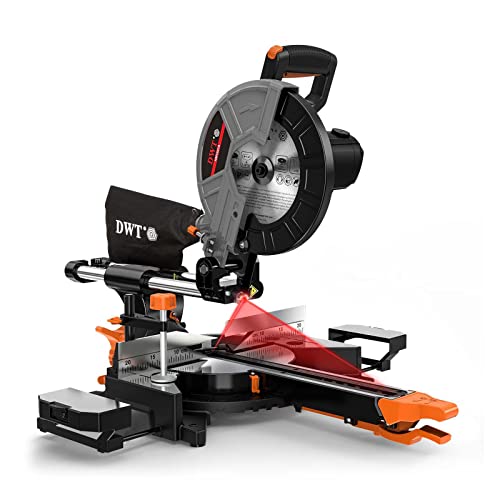Beautiful Plants For Your Interior
Beautiful Plants For Your Interior
Yes, a miter saw can be used to cut PVC pipe. In fact, it’s an effective way to get precise cuts. However, you’ll need to use the right blade. Make sure you use a fine-toothed blade designed for cutting plastic, as this will prevent the PVC from cracking or melting. Remember to wear safety goggles and a dust mask, and keep your hands away from the blade.

PVC pipes are ubiquitous in plumbing, drainage, and other industrial and residential applications. They are cheap, lightweight, and easy to install. But, cutting them to the required size with precision can be a bit of a challenge. Many people might wonder whether a miter saw is a good option for cutting PVC pipes.
In this article, we will explore the feasibility of using a miter saw for cutting PVC pipes, factors you should consider before doing so, and some tips to ensure you achieve the best results.
The simple answer is yes. A miter saw can cut PVC pipes with ease. In fact, it is one of the best tools you can use to cut PVC pipes, especially if you need to make precise angled cuts.
A miter saw is a power tool used to make accurate crosscuts, miters, and bevels at a selected angle. It consists of a circular saw blade mounted on a swing arm that pivots left and right to create angled cuts. The blade is powered by an electric motor and can be adjusted to make different cuts.
A miter saw’s typical blade size ranges from 8 inches to 12 inches. The blade size is an essential factor to consider when cutting PVC pipes, as it will determine the maximum thickness you can cut.
The blade is perhaps the most critical component of a miter saw. The type of blade you select will determine the quality of cuts you make. For cutting PVC pipes, use a fine-toothed blade with a high tooth count.
A fine-toothed blade ensures a smooth cut, leaving a clean edge on the pipe. PVC pipes are relatively soft and can melt when exposed to high temperatures caused by friction. Using a high tooth count blade helps reduce the heat generated during cutting and reduces the risk of melting.
As mentioned earlier, blade size matters when cutting PVC pipes. The larger the blade size, the deeper the cut it can make. If you need to cut thick PVC pipes, consider using a 12-inch blade. For smaller pipes, an 8-inch blade is sufficient.
Cutting PVC pipes with a miter saw requires a slow and controlled cutting speed. A high cutting speed creates too much heat, which can melt the PVC material. A slower cutting speed ensures a more precise and smooth cut.
While cutting PVC pipes with a miter saw, safety should be a top priority. Always wear safety goggles, a dust mask, and ear protection. The dust and debris created during the cutting process can be harmful to your lungs and eyes.
Before making any cuts, ensure you measure the pipe correctly to avoid making costly mistakes. Take accurate measurements and double-check the angles to ensure that the cuts are precise.
Mark the pipe’s cut line using a marker or chalk. This will help you make accurate cuts and achieve a clean edge.
To make precise cuts, ensure the pipe is secured firmly in place. You can use clamps or a vise to hold the pipe in place.
When cutting thin PVC pipes, use a backing board to prevent the pipe from vibrating and buckling during the cutting process. A backing board will also help prevent the blade from binding and creating uneven cuts.
Overheating the blade can cause it to warp or melt, resulting in poor quality cuts. To avoid overheating, take breaks between cuts to allow the blade to cool down. You can also use a water-cooled blade or lubricant to reduce the heat generated during cutting.
In conclusion, a miter saw is an excellent tool for cutting PVC pipes, thanks to its accuracy and ability to make angled cuts. However, it is essential to consider the factors mentioned above and take safety precautions to ensure you achieve the best results. Remember to measure accurately, mark the cut line, secure the pipe, use a fine-toothed blade, and avoid overheating the blade. With these tips, you can make precise cuts and achieve a clean edge on your PVC pipes.
Table: Blade Sizes and Maximum Cut Depths for Cutting PVC Pipes
| Blade Size (inches) | Maximum Cut Depth (inches) |
|---|---|
| 8 | 1.5 |
| 10 | 2.25 |
| 12 | 3.5 |